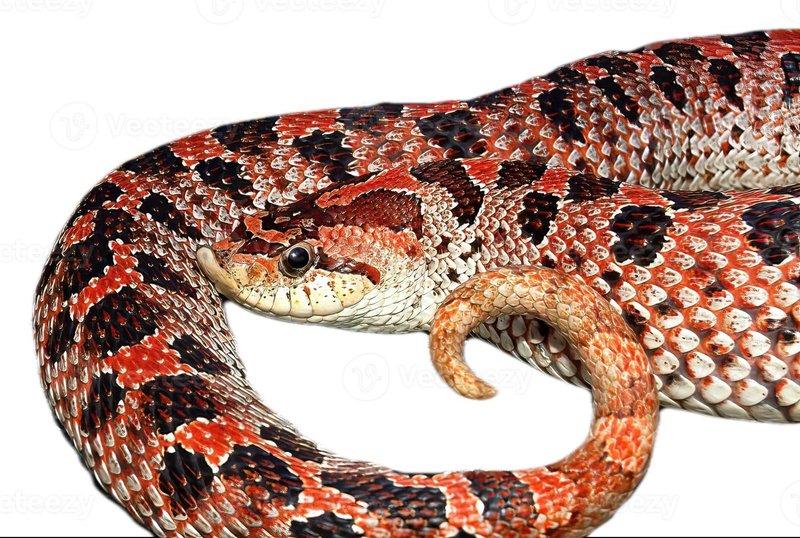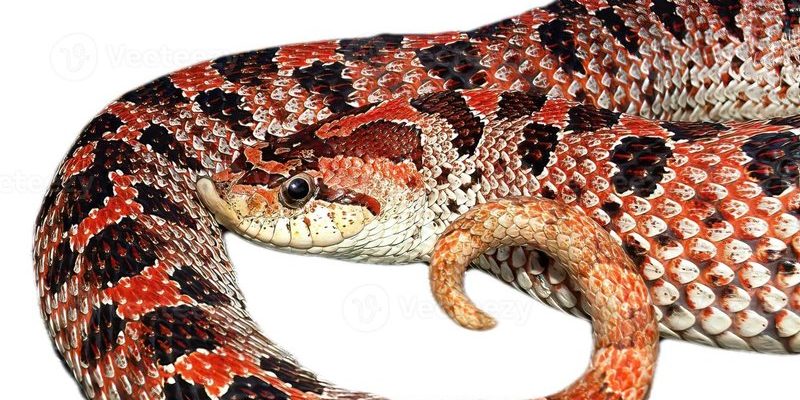
The Hognose Snake is one of those reptiles that instantly captures your attention with its unique features and fascinating behaviors. Imagine a snake that can play dead just like a possum or puff up its neck to appear larger! These snakes, known for their adorable upturned snouts, aren’t just cute; they’re also pretty interesting when it comes to their habits and habitats. Native to North America, they thrive in various environments, from sandy deserts to lush woodlands, showcasing their incredible adaptability.
Finding a Hognose snake in the wild can feel a bit like spotting a celebrity in a coffee shop—you’re both excited and a bit in awe. Their personalities are as colorful as their scales, allowing them to stand out in the diverse world of snakes. These creatures, often misunderstood due to their defensive behaviors, are usually more curious than aggressive. By understanding them better, we can appreciate their role in the ecosystem and learn how to coexist with these fascinating reptiles.
Physical Characteristics
One of the most striking features of the Hognose Snake is its distinctive snout, which curves slightly upwards. This unique shape isn’t just for show; it helps them dig into the ground while searching for prey, primarily toads and small mammals. Adult Hognose snakes typically range in size from 24 to 48 inches, with females being larger than males. Their coloration varies significantly, from earthy browns and greens to vibrant yellows and blacks, often adorned with unique patterns that help them blend into their surroundings.
Another cool aspect of their appearance is their scales, which are smooth and shiny, giving them a sleek appearance. When they feel threatened, Hognose snakes often display a variety of defensive behaviors. They might hiss loudly, flatten their necks, or roll over and play dead—traits that make them quite the performers in the animal kingdom. It’s almost like they have a perfect playbook for acting tough when they really just want to be left alone.
Habitat and Distribution
Hognose snakes inhabit a variety of environments, primarily found in North America, specifically in regions such as the Great Plains and parts of the Southeastern United States. They prefer habitats with loose, sandy soils, which make it easier for them to dig and hunt. You might find them in open fields, forests, or even near agricultural areas, where they can venture into gardens and farms in search of food.
Throughout their range, these snakes have learned to adapt to different climates and terrains. During the colder months, Hognose snakes go into brumation, a state similar to hibernation, where their activity slows down significantly. They often seek shelter in burrows or under rocks to stay warm and protected from harsh weather. This ability to thrive in varied conditions is a testament to their resilience and adaptability.
Diet and Feeding Habits
The diet of the Hognose snake mainly consists of amphibians, particularly toads, along with small mammals and lizards. These predators have a particular knack for catching their prey. Their upturned snouts help them dig into the sandy ground to unearth hidden toads, which can be quite a challenge given how well these creatures can camouflage themselves. When hunting, they often employ a stealthy approach, waiting patiently for the perfect moment to strike.
Interestingly, when it comes to feeding, Hognose snakes have a unique method of swallowing their prey whole. They possess a flexible jaw structure that allows them to consume food items much larger than their heads. After killing their prey, they’ll often take their time to savor the meal, sometimes going days without eating if they have just had a substantial meal. This ability to go without food for extended periods is crucial for their survival, particularly in environments where food is not consistently available.
Behavior and Temperament
When it comes to behavior, Hognose snakes are known for their intriguing defensive mechanisms. If threatened, they might puff out their bodies, hiss loudly, or even roll onto their backs and play dead, showing a quite remarkable ability to act helpless. This behavior can be quite fascinating to observe, as it showcases their survival instincts in action. You might find yourself chuckling as they perform their little acts, which are effective in intimidating potential predators.
Despite their dramatic displays, Hognose snakes are generally calm and not aggressive towards humans. In fact, many snake enthusiasts keep them as pets due to their manageable sizes and quirky personalities. Their docile nature makes them great to handle, and with proper care, they can thrive in captivity. Understanding the behavior of these snakes can foster a deeper appreciation for their role in the ecosystem and help dispel common misconceptions about them being dangerous.
Reproduction and Lifespan
Hognose snakes typically breed in the spring after waking from brumation. Females usually lay between 5 to 20 eggs, which they bury in moist soil or sand to protect them from predators. After approximately 60 days, the baby snakes hatch, ready to take on the world. Interestingly, hatchlings are miniature versions of adults, complete with the same upturned snout that makes them so distinctive.
In captivity, with proper care, Hognose snakes can live up to 15 years or longer. Their lifespan can vary based on their environment and diet. In the wild, factors such as predators and habitat destruction can shorten their lives, emphasizing the importance of conservation efforts to protect their natural habitats. Just like any animal, they need a safe space to thrive and grow.
Conservation Status
The conservation status of Hognose snakes varies across different regions. Some populations are thriving, while others face threats from habitat loss and fragmentation, primarily due to urban development and agriculture. Conservationists are working to protect these snakes and their habitats, promoting awareness about their ecological significance. By creating protected areas and promoting sustainable land use, efforts are underway to ensure these charming snakes can flourish in their natural environments.
As individuals, we can help by supporting conservation initiatives and educating others about the importance of these reptiles. It’s essential to foster an appreciation for wildlife, as every creature, including the Hognose snake, plays a role in maintaining the balance of our ecosystem. The more we understand and advocate for these species, the better chance they have in a rapidly changing world.
Interesting Facts About Hognose Snakes
| Common Name: | Hognose Snake |
| Scientific Name: | Heterodon spp. |
| Size: | 24-48 inches |
| Habitat: | Sandy soils, open fields, forests |
| Diet: | Amphibians, small mammals, lizards |
| Lifespan: | Up to 15 years in captivity |
| Behavior: | Defensive displays, plays dead |
FAQ
What do Hognose snakes eat?
Hognose snakes mainly eat amphibians, especially toads, but they also consume small mammals and lizards. Their diet can vary depending on the availability of prey in their environment. In captivity, it’s important to provide them with a balanced diet that mimics their natural food sources.
Are Hognose snakes venomous?
No, Hognose snakes are not venomous to humans. While they may have mild venom that helps subdue their prey, it’s not harmful to us. Their defensive behavior is more about acting tough rather than posing any real threat. So, if you encounter one, remember they’re just trying to survive!
How do Hognose snakes reproduce?
Hognose snakes reproduce by laying eggs in the spring after mating. The female can lay anywhere from 5 to 20 eggs, which she buries in suitable soil. The eggs incubate for about 60 days before hatching into miniature versions of the adults.
What is the lifespan of a Hognose snake?
In captivity, Hognose snakes can live up to 15 years or longer with proper care. In the wild, their lifespan may be shorter due to predators and environmental factors. It’s important to provide them with a safe habitat to maximize their lifespan.
Can Hognose snakes be kept as pets?
Yes! Many people keep Hognose snakes as pets due to their manageable size and friendly nature. They require specific care, such as appropriate heating, humidity, and a balanced diet, but they can make great companions for reptile enthusiasts.
Where are Hognose snakes found?
Hognose snakes are primarily found in North America, ranging from the Great Plains to the southeastern United States. They thrive in diverse habitats, including sandy soils, fields, and some forested areas, giving them the ability to adapt to various environments.
What should I do if I encounter a Hognose snake in the wild?
If you encounter a Hognose snake, it’s best to keep your distance and observe them from afar. They are generally non-aggressive and will likely prefer to avoid confrontation. If necessary, you can gently guide them away from populated areas using a stick or your foot, but always prioritize both your safety and the snake’s well-being.
Do Hognose snakes have any natural predators?
Yes, Hognose snakes have several natural predators, including birds of prey, larger snakes, and mammals. Their defensive behaviors, like playing dead or hissing, help them evade these threats and survive in the wild.
Are Hognose snakes endangered?
While some populations of Hognose snakes are stable, others face threats due to habitat loss and degradation. Conservation efforts focus on protecting their habitats and raising awareness about their ecological importance to ensure they continue to thrive.
What are some unique behaviors of Hognose snakes?
Besides their famous act of playing dead, Hognose snakes exhibit a range of unique behaviors. They can puff up their bodies to appear larger and may even hiss loudly when threatened. This combination of tactics helps them deter potential predators effectively.
How can I help conserve Hognose snakes?
You can help conserve Hognose snakes by supporting local conservation initiatives, educating others about their importance, and respecting their natural habitats. Simple actions like promoting sustainable land use can make a significant difference in preserving their populations.

